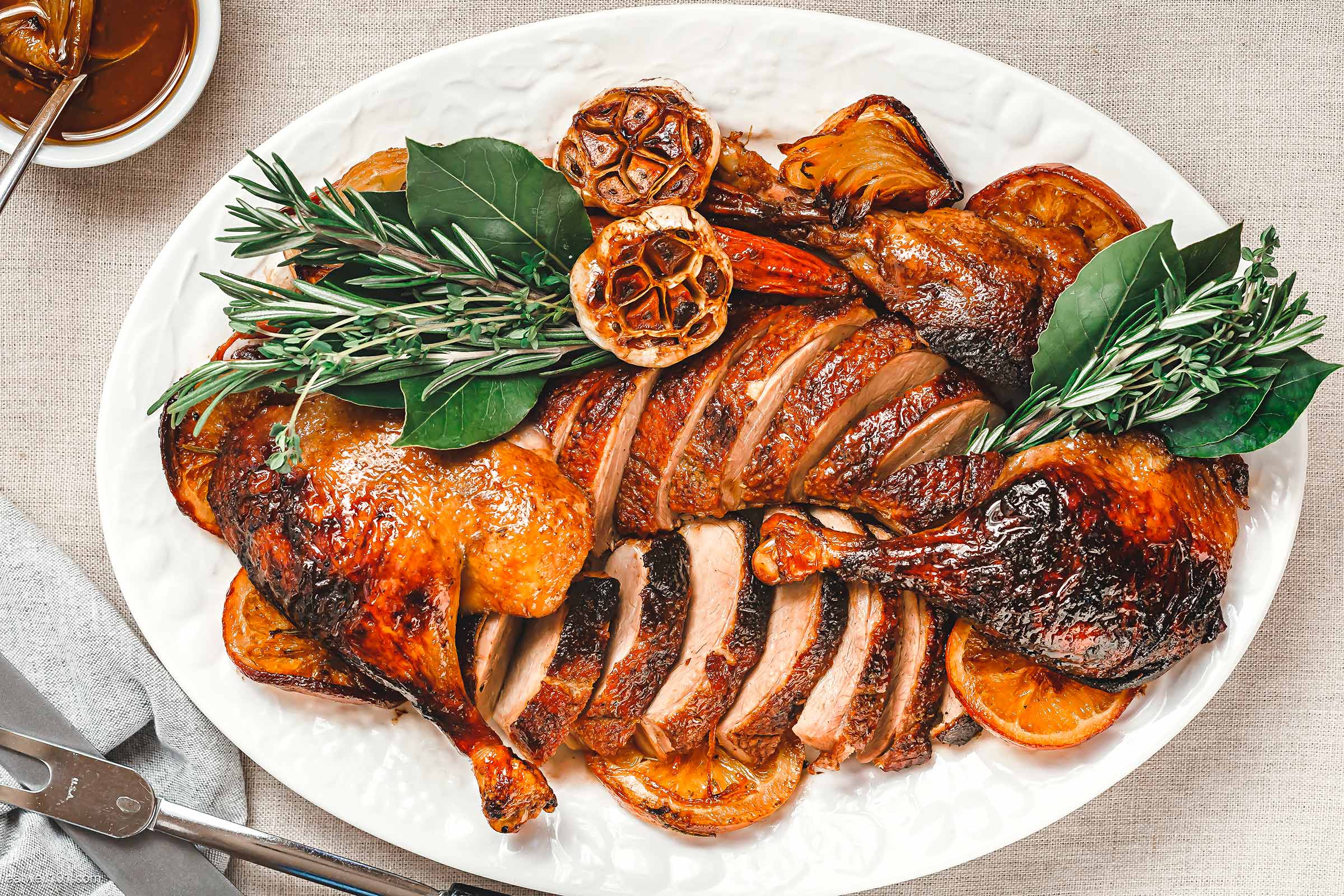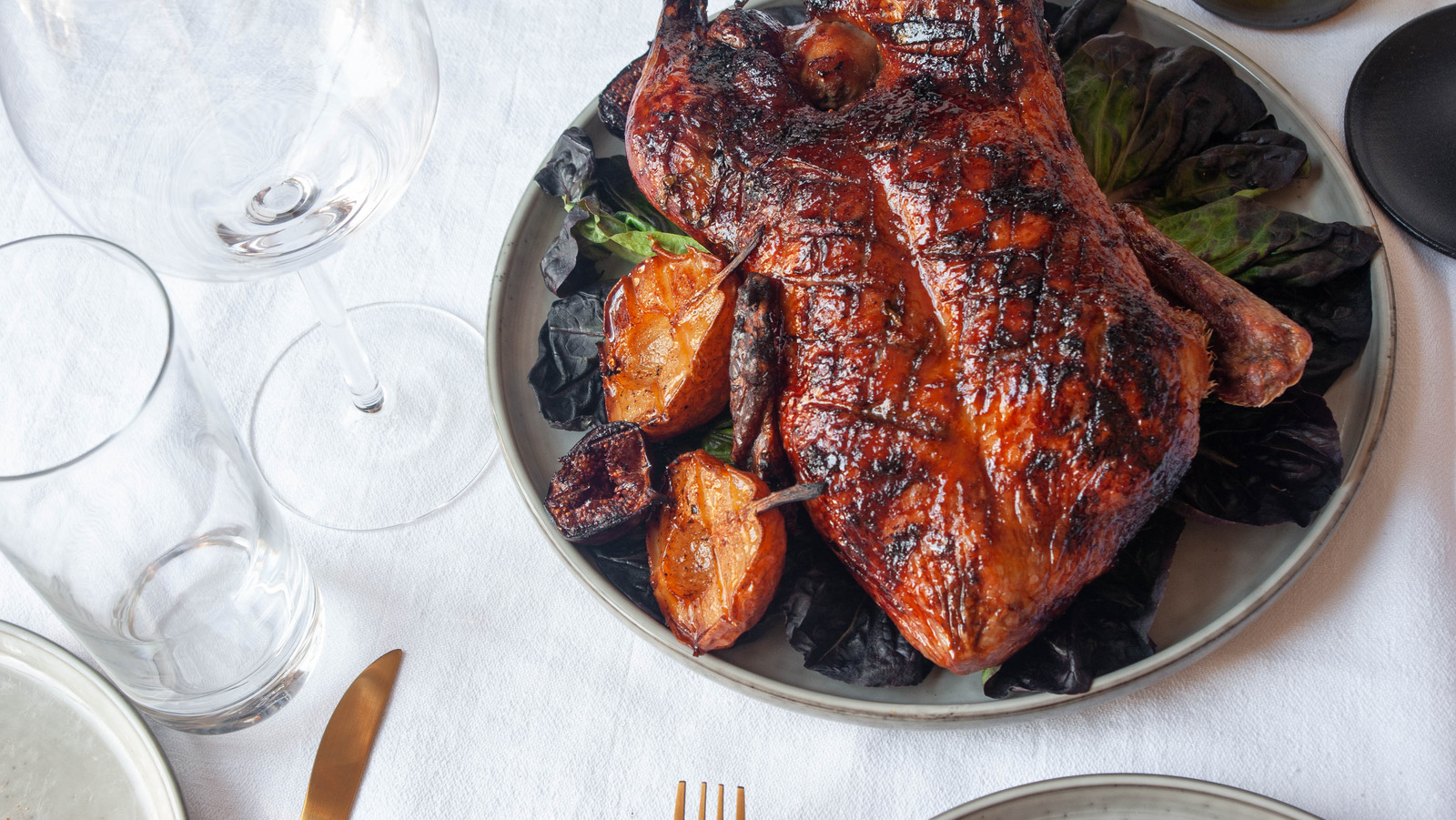
A Taste of Tradition: Exploring Native American Roasted Duck Recipes
For millennia, the rich tapestry of Native American culinary traditions has been woven with the bounty of the land. Among the most prized and symbolic ingredients is the duck, a creature deeply intertwined with the history, spirituality, and sustenance of many tribes. Roasted duck, prepared with a reverence for its natural flavor and often enhanced by indigenous ingredients, stands as a testament to this enduring connection. This article delves into the heart of Native American roasted duck recipes, exploring the techniques, ingredients, and cultural significance that make these dishes so special.
The relationship between Native Americans and waterfowl, particularly ducks, is multifaceted. Ducks were not merely a food source; they were often viewed as spiritual beings, their migratory patterns observed and respected. The act of hunting them was a skilled art, passed down through generations, and the preparation of the meat was equally revered. Unlike modern culinary approaches that might heavily rely on intense marinades or complex sauces, traditional Native American methods often aimed to accentuate the natural, slightly gamey flavor of the duck, drawing out its richness with simple, yet profound, accompaniments.
The Art of Preparation: From Hunt to Hearth

The journey of a roasted duck in Native American tradition began long before it reached the cooking fire. The hunt itself was a ritual, often involving specific techniques and a deep understanding of animal behavior. Once harvested, the duck would be meticulously prepared. Feathers would be plucked with care, and the internal organs removed. The emphasis was often on utilizing the entire animal, minimizing waste, and honoring the life given.
The roasting process itself varied depending on the tribe, the available cooking methods, and the specific occasion. Pit roasting, where the duck was wrapped in leaves or animal hides and buried in hot coals, was a common and effective method for achieving slow, even cooking and imparting a smoky flavor. Other methods included spit-roasting over an open fire or baking in a rudimentary oven constructed from earth and stones. The key was often patience and a gentle heat that allowed the duck’s fat to render slowly, basting the meat and ensuring its succulence.
Indigenous Flavors: A Symphony of the Land
The true magic of Native American roasted duck recipes lies in the thoughtful integration of indigenous ingredients. These were not exotic imports but the natural offerings of the environment:
- Berries: Wild berries, such as cranberries, blueberries, and chokecherries, were a staple. Their tartness and sweetness provided a perfect counterpoint to the richness of the duck. Often used whole or mashed into a simple sauce, they added a vibrant burst of flavor and color.
- Herbs and Aromatics: Wild onions, garlic, sage, and various wild mints were frequently used to season the duck, both inside the cavity and rubbed onto the skin. These herbs imparted a subtle complexity and a fresh, earthy aroma.
- Nuts: Acorns, pine nuts, and other wild nuts were sometimes ground into flour or added whole to stuffings, providing a nutty depth and textural contrast.
- Root Vegetables: While less common in direct roasting preparations, root vegetables like wild potatoes or parsnips could be roasted alongside the duck in a pit, absorbing its juices and flavors.
- Maple Syrup: In regions where maple trees were abundant, maple syrup offered a natural sweetener, often used to glaze the duck in its final stages of cooking, creating a beautiful, caramelized exterior.
- Corn and Grains: While not always directly roasted with the duck, corn, in its various forms (cornmeal, whole kernels), was a vital accompaniment, often served as a side dish.

Cultural Significance: More Than Just a Meal
The presence of duck in Native American meals often carried significant cultural weight. Ducks were symbols of abundance, good fortune, and the changing seasons. They featured prominently in creation stories, folklore, and ceremonial feasts. A roasted duck might be prepared for important gatherings, celebrations, or as an offering of gratitude. The act of sharing this prized meal reinforced community bonds and the collective reliance on the land.
Modern Interpretations and Enduring Traditions
While many traditional techniques have been preserved, modern Native American chefs and home cooks are also reinterpreting these classic recipes, blending ancestral knowledge with contemporary culinary tools and influences. The core principles, however, remain: respect for the ingredient, an appreciation for indigenous flavors, and a connection to the cultural heritage.
Today, as we explore Native American roasted duck recipes, we are not just seeking culinary delight; we are engaging with a rich history, a profound connection to nature, and the enduring spirit of a people. These recipes offer a tangible link to the past, a delicious reminder of the wisdom passed down through generations, and a celebration of the flavors that have sustained Native American communities for centuries.
A Glimpse into Native American Roasted Duck Recipes: A Collection of Inspirations
While precise, standardized recipes from ancient times are scarce due to the oral tradition and the diversity of tribes, we can reconstruct the spirit and essence of these dishes through historical accounts, anthropological research, and the culinary traditions that have been preserved and adapted. The following are examples of how Native American roasted duck might have been prepared, focusing on indigenous ingredients and traditional techniques. These are not exact replicas but rather inspired interpretations.
Listing of Inspired Native American Roasted Duck Recipes:
Here are a few examples, categorized by their primary flavor profiles and techniques, to give you a taste of the possibilities:
1. Sage and Berry Glazed Roasted Duck (Inspired by Eastern Woodlands Traditions)
- Concept: This recipe emphasizes the use of wild berries and aromatic herbs commonly found in the Eastern Woodlands. The sweetness and tartness of the berries balance the richness of the duck, while sage provides an earthy, aromatic note.
- Key Ingredients: Whole duck, fresh or dried wild berries (cranberries, blueberries, chokecherries), fresh sage leaves, wild onion or leek, salt, possibly a touch of maple syrup.
- Preparation Inspiration:
- Cavity Stuffing: A simple stuffing of chopped wild onion or leek and fresh sage leaves.
- Glaze: A reduction of mashed wild berries, perhaps sweetened with a little maple syrup, brushed onto the duck during the last stages of roasting.
- Roasting Method: Slow roasting over a moderate fire or in an oven to allow the fat to render and baste the meat.
2. Acorn and Herb Stuffed Roasted Duck (Inspired by Western Traditions)
- Concept: This recipe draws inspiration from tribes who utilized acorns as a staple food. The nutty flavor of acorns, combined with aromatic herbs, creates a hearty and deeply flavorful stuffing.
- Key Ingredients: Whole duck, processed acorns (leached and ground into flour or meal), wild herbs (sage, wild thyme), wild onion, possibly some rendered duck fat for binding.
- Preparation Inspiration:
- Stuffing: A mixture of acorn flour, finely chopped wild herbs, and wild onion, bound together with a little water or rendered duck fat.
- Roasting Method: Pit roasting or slow oven roasting to ensure the stuffing cooks through and absorbs the duck’s juices.
3. Simple Smoked and Roasted Duck (Inspired by Plains and Great Lakes Traditions)
- Concept: This approach focuses on the pure flavor of the duck, enhanced by the subtle smokiness of traditional cooking methods. Minimal seasoning allows the natural taste of the waterfowl to shine.
- Key Ingredients: Whole duck, coarse salt, possibly a few sprigs of wild mint or other mild aromatic herb.
- Preparation Inspiration:
- Seasoning: Generously rubbed with coarse salt.
- Roasting Method: Spit-roasting over a slow, smoky fire, or pit roasting wrapped in large leaves (like corn husks or grape leaves) to impart a gentle smoky flavor and keep the duck moist.
4. Maple-Kissed Roasted Duck (Inspired by Northeastern Traditions)
- Concept: This recipe utilizes the natural sweetness of maple syrup, a significant resource for many Northeastern tribes, to create a beautiful glaze and enhance the duck’s flavor.
- Key Ingredients: Whole duck, pure maple syrup, salt, possibly a pinch of ground dried berries for color and tartness.
- Preparation Inspiration:
- Glaze: Pure maple syrup, warmed and brushed over the duck during the final 30-45 minutes of roasting. A touch of dried berry powder could be incorporated.
- Roasting Method: Oven roasting or spit-roasting, allowing the maple syrup to caramelize and form a glossy exterior.
Important Considerations for Recreating These Inspired Recipes:
- Duck Quality: The quality of the duck is paramount. If using store-bought duck, opt for a good quality, free-range bird.
- Indigenous Ingredients: Sourcing authentic indigenous ingredients can be challenging. Research local foraging opportunities or look for reputable suppliers of wild edibles. Substitutions can be made with common ingredients that mimic the flavor profiles (e.g., regular cranberries for wild cranberries, common sage for wild sage).
- Cooking Techniques: Adapt traditional methods to modern kitchens. Slow and steady heat is key for tender, succulent roasted duck.
- Respect and Reverence: Approach the cooking process with respect for the ingredient and the traditions it represents.
These inspired recipes offer a starting point for exploring the rich culinary heritage of Native American roasted duck. They encourage us to think about the connection between food, nature, and culture, and to savor the unique flavors that have been cherished for generations.


